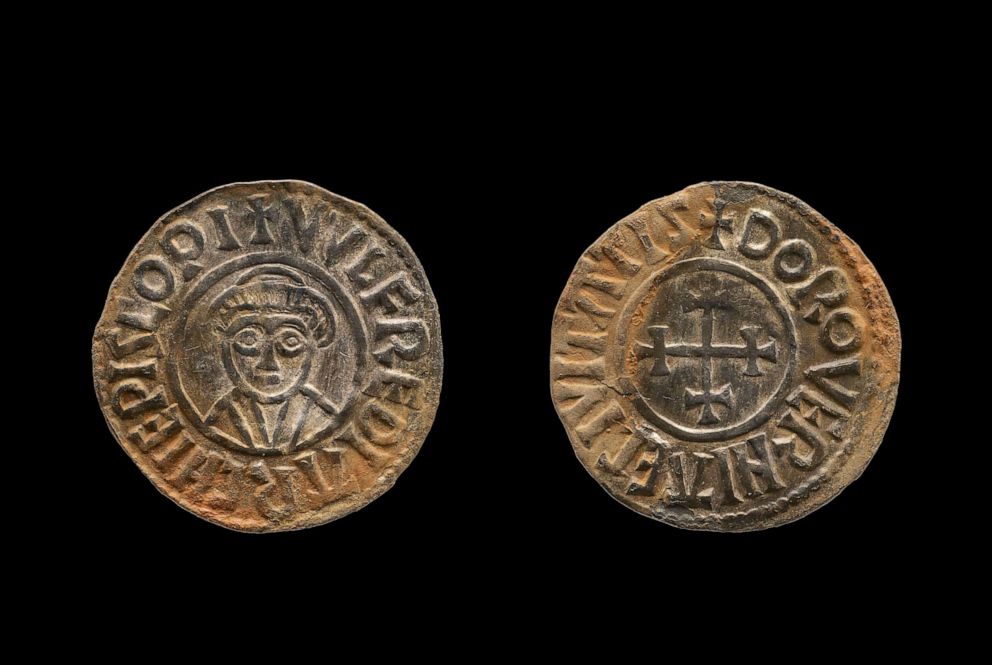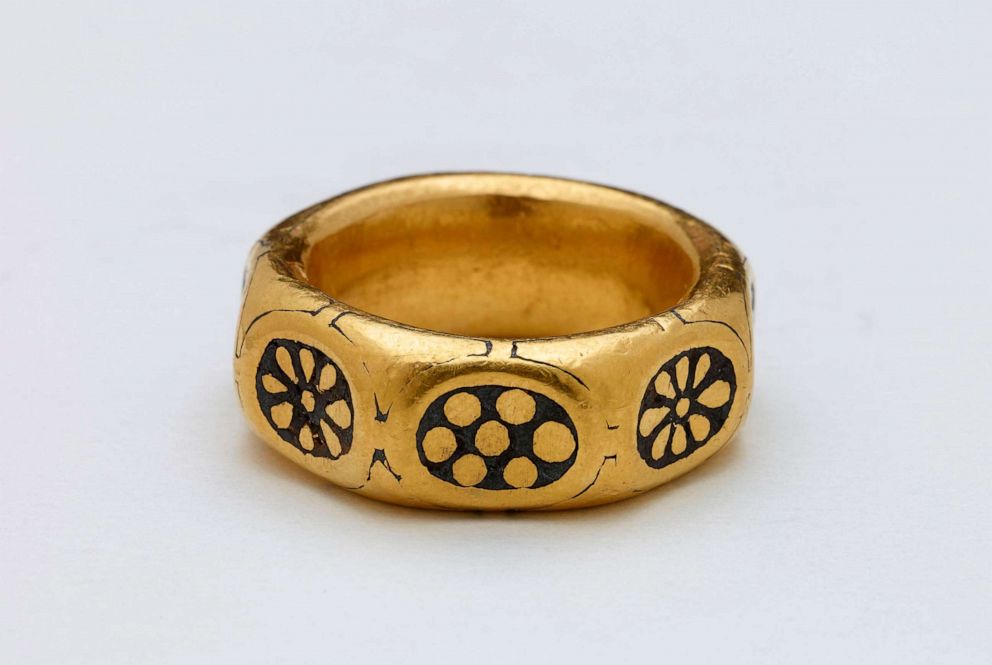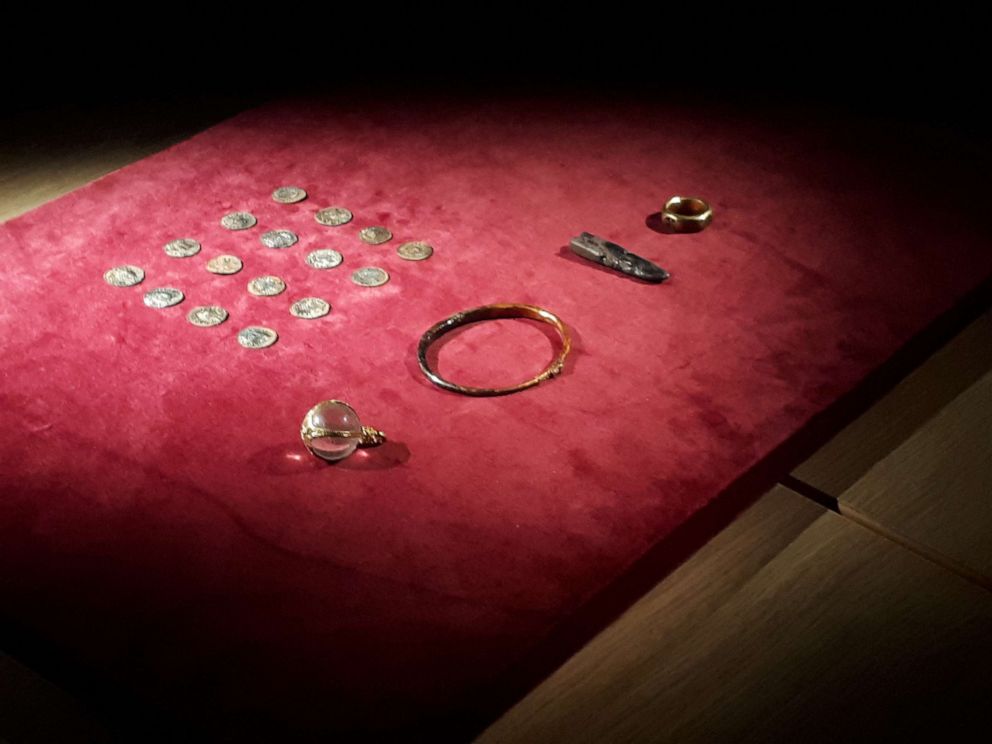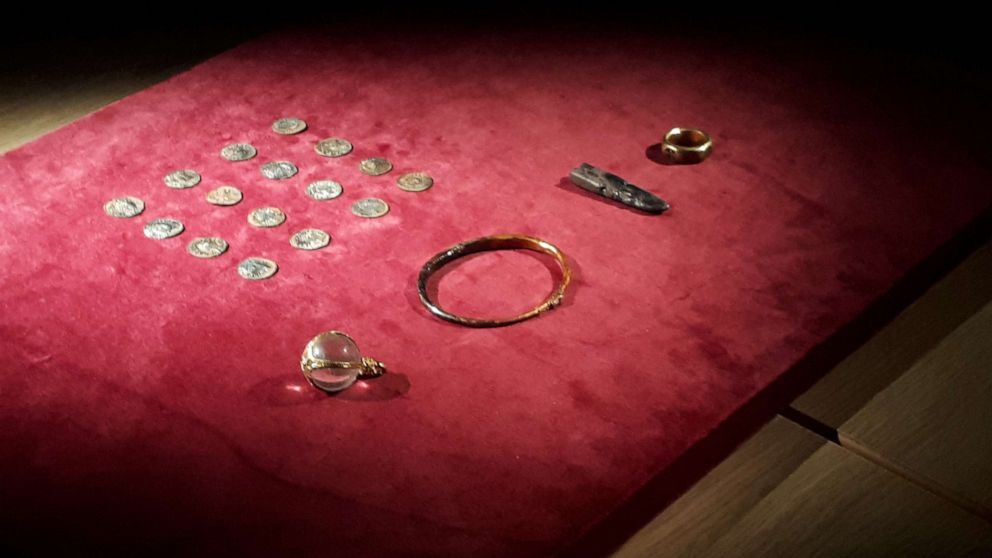[ad_1]
Four men have been found guilty and sentenced in connection to the theft of an Anglo-Saxon treasure hoard worth more than $3.8 million, bringing a years long investigation to a close in the United Kingdom.
George Powell, 38, and Layton Davies, 51, were sentenced to a combined 23 years for their roles in the theft and conspiracy to convert and conceal criminal property at Worcester Crown Court Thursday.
Simon Wicks, 57, was found guilty of conspiracy to conceal and convert criminal property, while a fourth man, Paul Wells, 60, was also found guilty of conspiracy to conceal, but will be handed his sentence on Dec. 23.
Police launched an investigation into the possibility that a large treasure hoard had gone missing after receiving information from members of the metal detecting community in Herefordshire and the British Museum, police said.
Authorities discovered that Powell and Davies had visited the site where the missing treasure was taken earlier that month. The missing hoard included Anglo-Saxon coinage, jewelry and silver ingots dating from the 9th and 10th centuries and are reportedly worth millions of dollars.
 British Museum/AP
British Museum/AP
Among the jewelry found at the site was a rock crystal pendant, a gold finger ring and a gold arm ring, police said. Despite the sentencing of the culprits, police have issued a public appeal for more information as some of the missing treasure is still believed to be unaccounted for, according to the investigating officer in the operation.
Police estimated the total value of the stolen goods to be worth more than $3.8 million.
“In all my policing years of service, this is the most unusual investigation I have been involved in,” Detective Constable Nigel Cleeton said in a statement. “We believe there are coins outstanding and would appeal to anyone that may have come across these items or has any information to get in touch.”
 British Museum via AP
British Museum via AP
An investigation into whether the men financially benefited from the sale of the coins will take place over the next few months.
Anyone who discovers a piece of treasure in England must report it to a local coroner within 14 days of finding, or he or she may be liable to prosecution, under the terms of the 1996 Treasure Act. The law broadly defines treasure as any metallic object that is at least 300 years old when found.
 West Mercia Police
West Mercia Police
Gareth Williams, Curator of Medieval Coins and Viking Collections at the British Museum, praised the authorities, saying the law prevents discoveries from being “quietly sold on the black market.”
“This is an unusual and important find, both in terms of what it can tell us about the history of the period, and because some of the individual objects are so rare and beautiful,” he said. “Discoveries such as this are an important part of our national heritage, and the Treasure Act (1996) is designed to ensure that such finds can be acquired by museums for the benefit of the general public.”
[ad_2]
Source link

